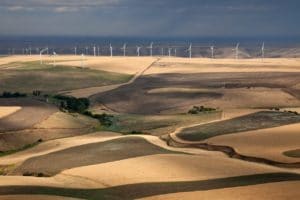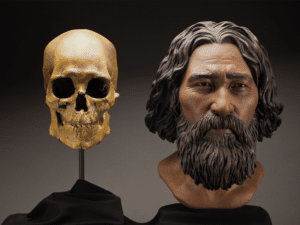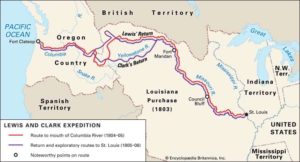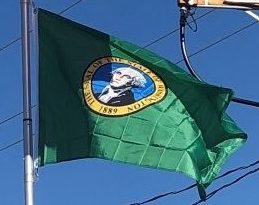Eastern Washington – the part of the state east of the Cascades – has a relatively dry climate, in distinct contrast to the west side. It includes large areas of semiarid steppe and a few truly arid deserts in the rain shadow of the Cascades.

Farther east, the climate becomes less arid, with annual rainfall increasing as one goes east. The Okanogan Highlands and the rugged Kettle River Range and Selkirk Mountains cover much of the state’s northeastern quadrant. The Palouse southeast region of Washington was grassland that has been mostly converted into farmland, and extends to the Blue Mountains.
History:
Early History:
The skeletal remains of Kennewick Man, one of the oldest and most complete human remains found in North America, were discovered in Washington. Before the Europeans arrived, the region had many established tribes of aboriginal Americans, notable for their totem poles and their ornately carved canoes and masks.

Prominent among their industries were salmon fishing and, notably among the Makah, whale hunting. The peoples of the Interior had a very different subsistence-based culture based on hunting, food-gathering and some forms of agriculture, as well as a dependency on salmon from the Columbia and its tributaries. The smallpox epidemic of the 1770s devastated the Native American population.
European Exploration:
The first recorded European landing on the Washington coast was by Spanish Captain Don Bruno de Heceta in 1775, on board the Santiago, part of a two-ship flotilla with the Sonora. He claimed the coastal lands up to Prince William Sound for Spain as part of their claimed rights under the Treaty of Tordesillas, which they maintained made the Pacific a “Spanish lake” and all its shores part of the Spanish Empire.
In 1778, British explorer Captain James Cook sighted Cape Flattery, at the entrance to the Strait of Juan de Fuca, but Cook did not realize the strait existed. It was not discovered until Charles William Barkley, captain of the Imperial Eagle, sighted it in 1787. The straits were further explored by Spanish explorers Manuel Quimper in 1790 and Francisco de Eliza in 1791, and British explorer George Vancouver in 1792.
Settlement:
The British-Spanish Nootka Convention of 1790 ended Spanish claims of exclusivity and opened the Northwest Coast to explorers and traders from other nations, most notably Britain and Russia as well as the fledgling United States. American captain Robert Gray then discovered the mouth of the Columbia River. He named the river after his ship, the Columbia. Beginning in 1792, Gray established trade in sea otter pelts. The Lewis and Clark Expedition entered the state on October 10, 1805.

Explorer David Thompson, on his voyage down the Columbia River camped at the confluence with the Snake River on July 9, 1811, and erected a pole and a notice claiming the country for Great Britain and stating the intention of the North West Company to build a trading post at the site.
